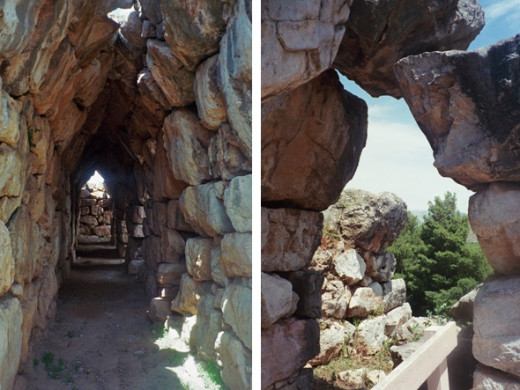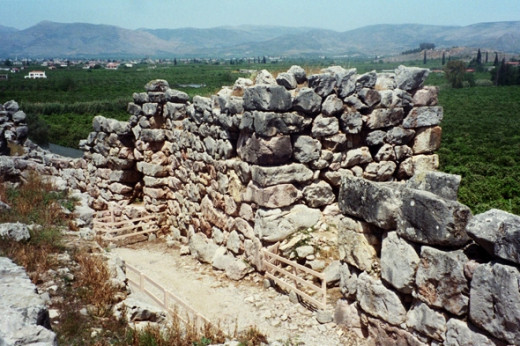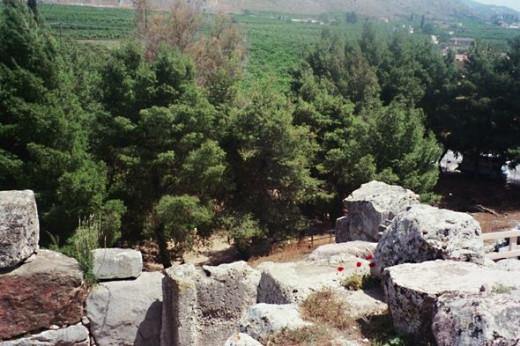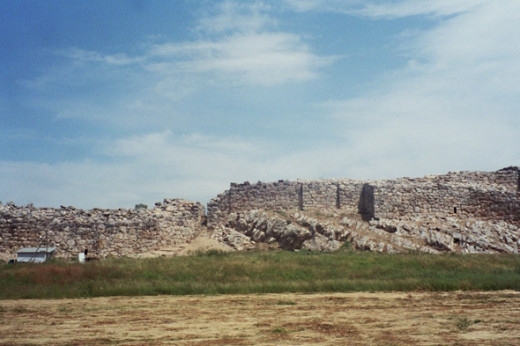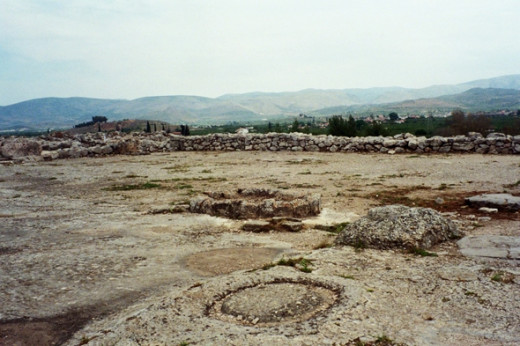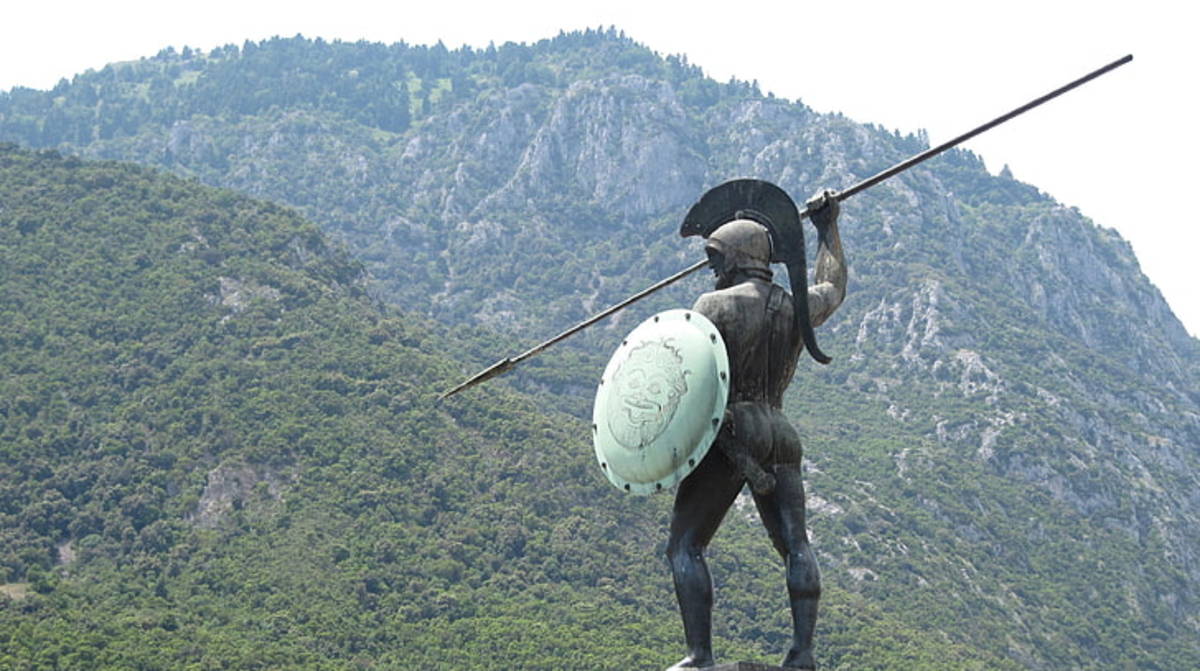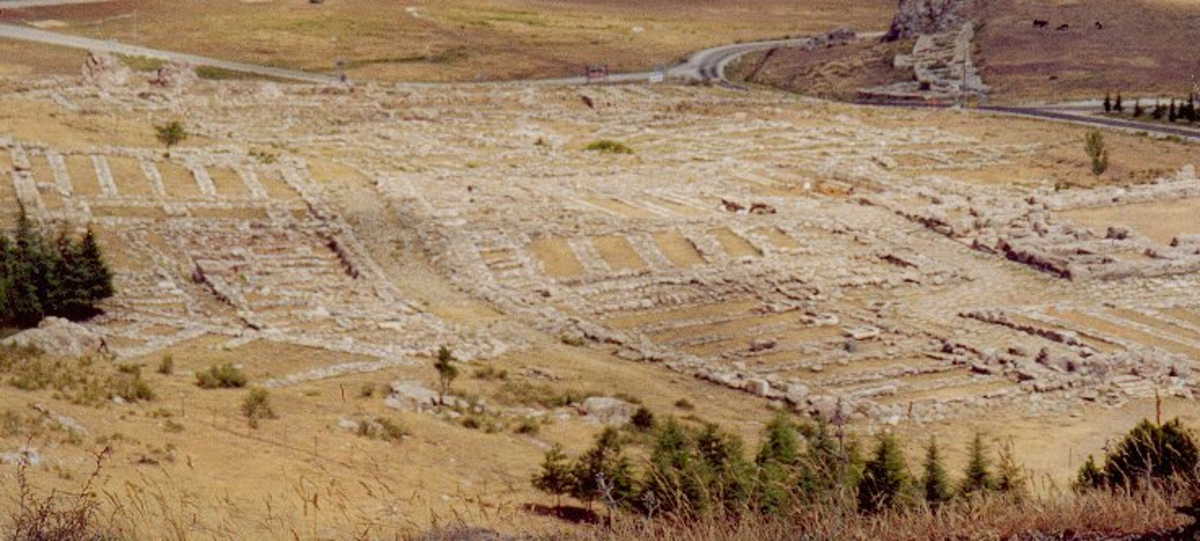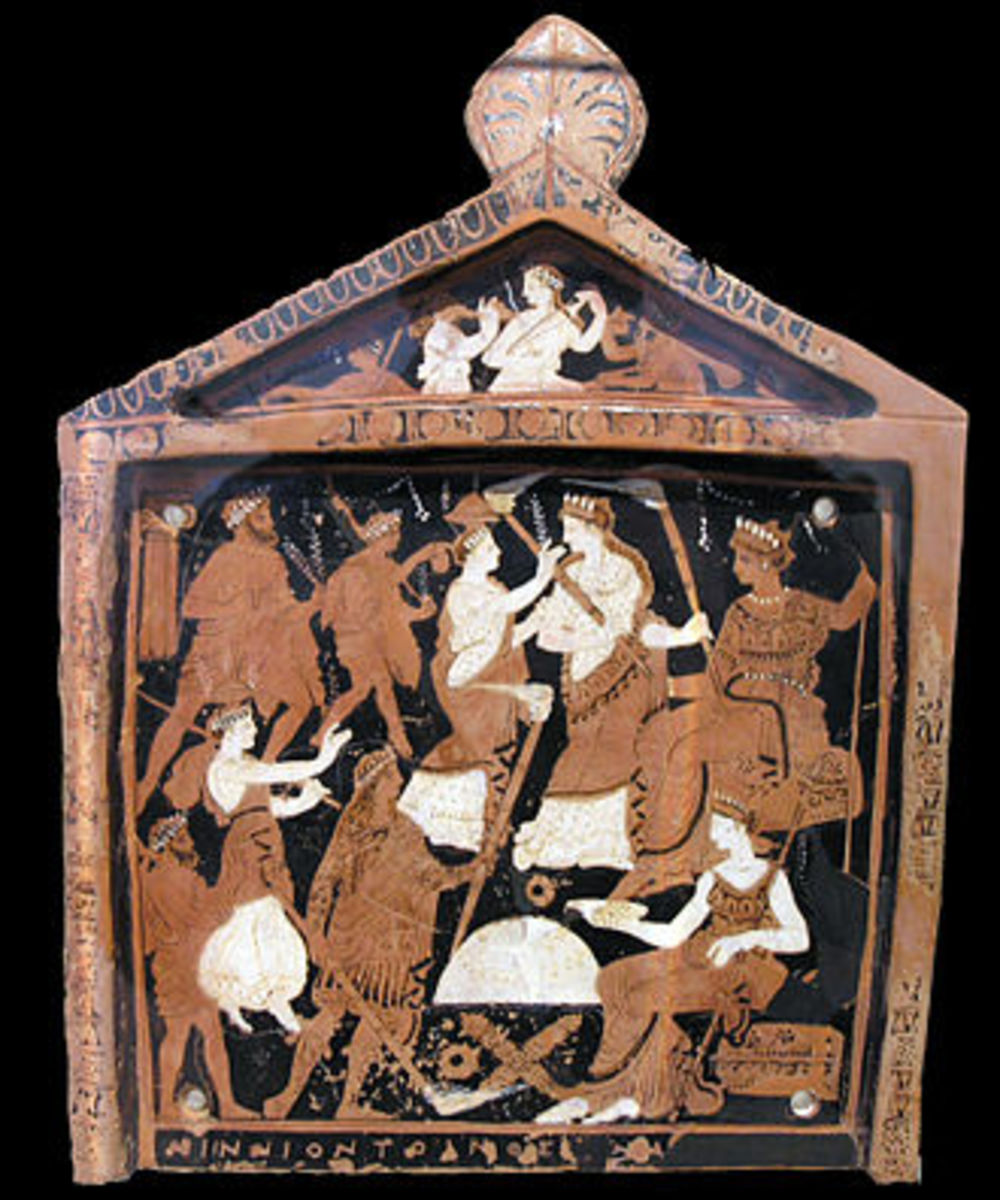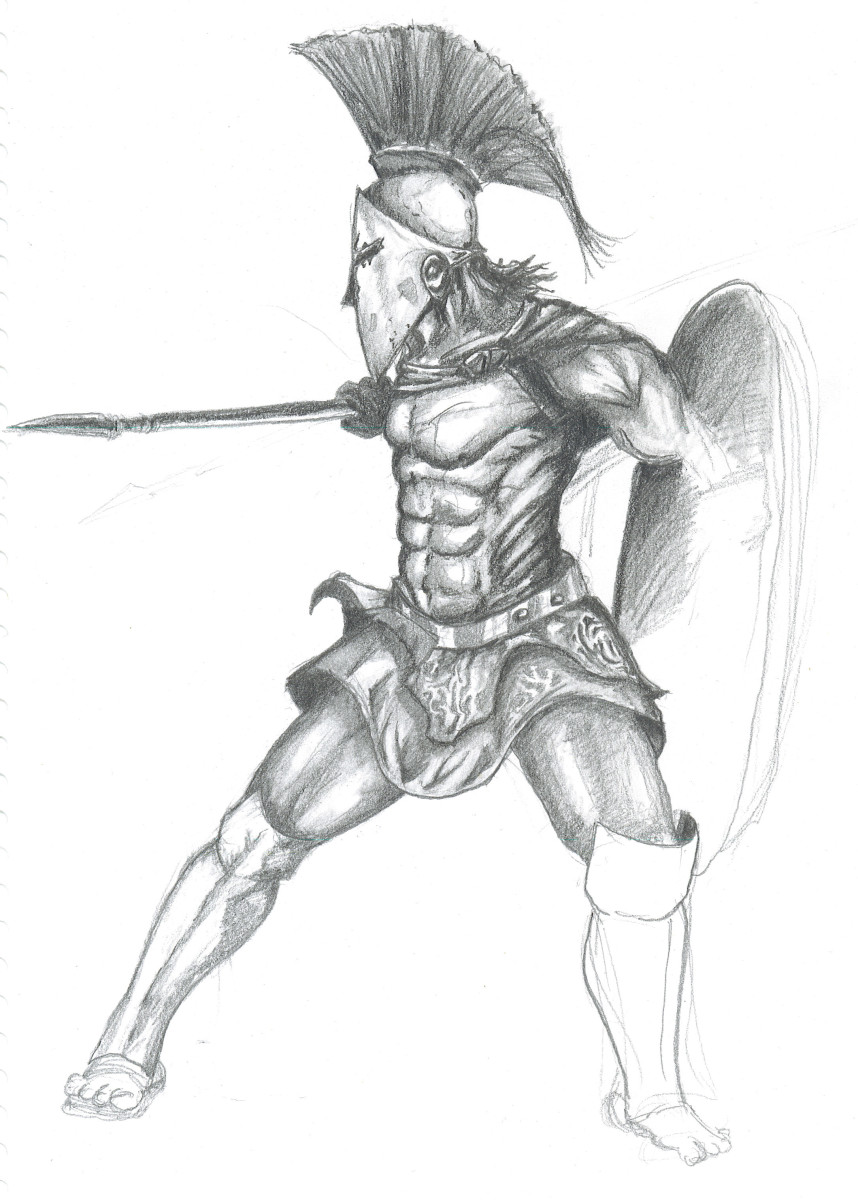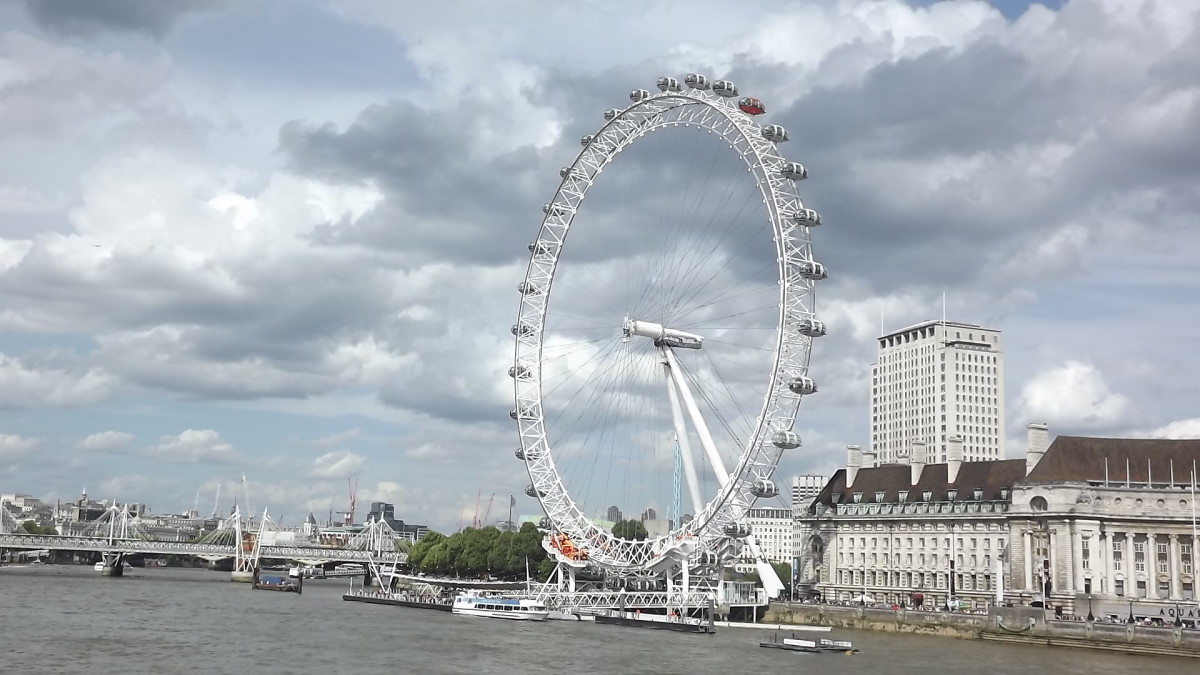Ancient Greece Odyssey: The Palace of Tiryns
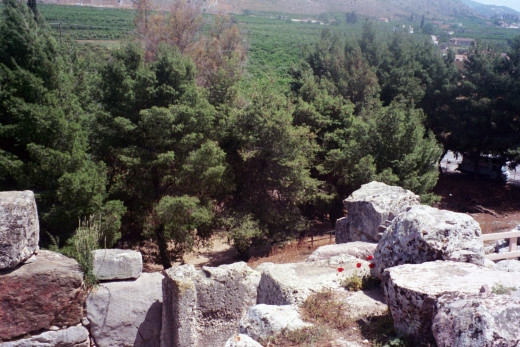
Ancient Greece Odyssey Part Six
The imposing Palace of Tiryns is a Bronze Age fortress from the time of the Trojan War. Unlike the citadel of Mycenae, there's no tour groups or paved walkways -- I and a friend had the site practically to ourselves! Below, I'll share my photos and knowledge of an archeaological site that most tourists to Greece don't see.
If you've just stumbled across this page, Ancient Greece Odyssey is the travel diary of a graduate student with degree in classics and mythology. My goal is to bring the wonders of the ancient world to life for those who haven't studied it, while slipping in useful photos, links, and resources for those who are studying it.
In Part V of Ancient Greece Odyssey, I recounted my visit to the Bronze Age palace of Mycenae, legendary home of King Agamemnon, leader of the Greek expedition to Troy. My tour group passed Tiryns on the drive back. I and one other member of our group bailed out to explore on our own, since the site was just three miles outside the city where we were staying
The Palace of Tiryns: A Bronze Age Fortress
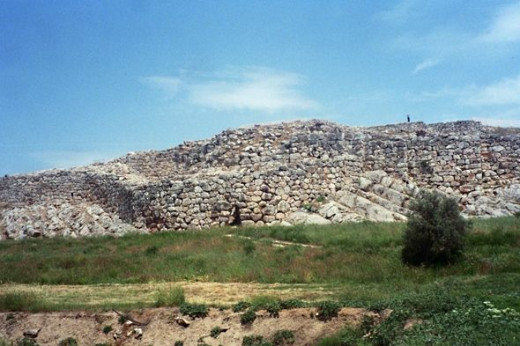
Palace of Tiryns (Note human figure for scale)
After our visit to Mycenae, I was not quite ready to yield to weary feet. The ruined palace of Tiryns had teased us on the drive out to Mycenae that morning. We were returning in early afternoon, and my friend Lisa was game for more. It meant a three-mile hike back to Nauplion and a steep trek up through the medieval city to our hotel. We would be well rewarded.
Even before the bus let us off, we were overwhelmed by Tiryns' massive walls: layer upon layer of them, some of them yards thick, a great bastion built on a stony crag. The natural outcrop was not as high as Mycenae's mountain heights, but Tiryns made up for it with fortified might. Small wonder that Homer calls this place "mighty-walled Tiryns."
Useful Links: Maps of Tiryns
- Google Maps: Nauplion, Tiryns and Mycenae
The map I made of my visit to Greece, with stops marked. Zoom in on the palace of Tiryns to see satellite photography of the ruins! - Harry's Guide to Tiryns
I don't know who Harry is, but he's got an excellent map of Tiryns (possibly scanned from the site pamphlet) along with a good description and photos of the site.
The Palace of Tiryns: Do-It-Yourself Archaeology
Travel Diary, 6th May 2005, Nafplia Palace Hotel
There were no tour guides, no museum, no carefully-marked paths: we paid our euros to a gate-guard and started climbing. Giant stairs again reminded me of the archaeologists' name for this kind of stonework, Cyclopean. It's easy to see why classical Greeks thought giants had built them.
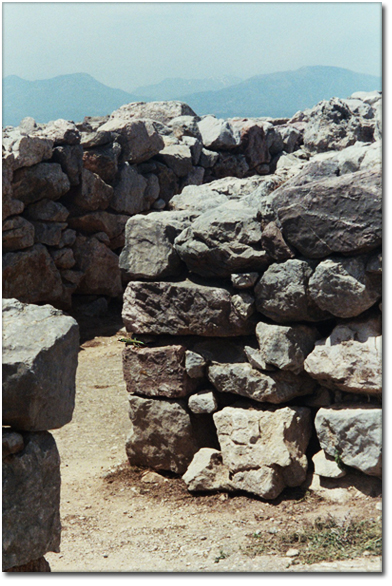
Under the watchful eye of a solitary green lizard (left), we played archaeologists, identifying the sockets of doorposts, column bases, great porches, drainage basins and pipes. We discovered a circular stone hearth dominating a large square courtyard -- an honest-to-gosh Mycenaean megaron, something that students of Homer read about. This is the sort of hall where Odysseus' wife Penelope would have kept her suitors dangling. We also found more recent foundations of some kind of building laid over the old throne room-- "more recent" probably meaning a mere 2500 years old.
We spent some time poking around the corbel vaulted tunnel that serves as part of the palace's outer defenses, pierced by openings that I assume would have allowed for archers to strike at chariots coming across the plain. Tiryns' corbel vaulting is the first attempt at an archlike structure in Europe, a primitive form of roofing which requires a lot of bracing. Primitive may be, but 3300 years later, it's still standing.
Apart from the walls, what I remember most about Tiryns is the sound of a crying hawk and the sweet scent of orange blossoms. It is surrounded on all sides by sprawling groves.
As for the hike back, we were rescued by a passing taxi. Just as well: by strange coincidence, both my ten-year-old hiking shoes suddenly fell apart just as we were leaving!
Photo Gallery: Palace of Tiryns - Click Thumbnails Below For Other Views
Click thumbnail to view full-size




About Tiryns: Some Background
History and Mythology of Tiryns
The palace of Tiryns was probably only a long day's chariot-drive from Mycenae, and mythology asserts that their royal families were related. Tiryns was probably a vassal or lesser kingdom allied with Mycenae. Tiryns was occupied right back into the Neolithic (Stone) Age, 1800BCE, but most of its ruins date to around 1300BCE, the heyday of the Mycenaean civilization. It seems to have been attacked and burned around 1200, but it was not destroyed. People continued to occupy the site into the classical period. During the height of its power, Tiryns would have been ruled by a king with a body of warriors. Farms and small settlements around the citadel would have paid in foodstuffs and other goods in exchange for protection, rather like a feudal castle in the Middle Ages.
The foundations Lisa and I noted in the throne room turned out to be an Archaic Period temple to Hera. Hera reminds me of Herakles, her bastard stepson, who also has some relevance to the site.
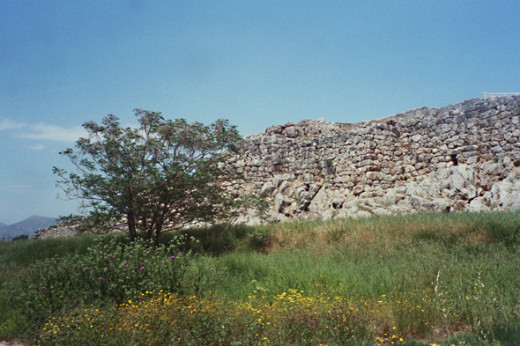
According to Greek mythology, Herakles (Hercules) was associated with Tiryns; exactly how varies by ancient writer. Herakles' great-grandfather Perseus was king first of Mycenae, then of Tiryns, but convoluted family feuds saw Herakles' father and mother banished to Thebes -- before the hero's birth, according to most tales; after it, according to some. Herakles should have inherited the kingship of both Mycenae and Tiryns, but the goddess Hera made sure they went to his cousin Eurystheus instead. King Eurystheus later assigned the hero his Twelve Labors. Myths are too hazy to rely on, but there may be a kernel of truth buried here. Perhaps there was a dynastic struggle among the royal families at Mycenae and Tiryns, which resulted in the losers getting exiled to up-and-coming Thebes.
The Iliad furnishes us with a more straightforward detail about "mighty-walled Tiryns." Homer says that Tiryns sent a contingent of warriors under the leadership of the hero Diomedes to the Trojan War. While Tiryns does not play a large role in the Iliad, some scholars are amazed at how closely Homer's description of the palace of Odysseus matches its layout.
- GreeceTaxi's Site on Ancient Tiryns
I'm usually leery of tourist websites, but this one gives good, detailed information on Tiryns (and photos) that are tailored to the informed general public. - Tiryns: Scholarly Essay by Edwin Schorr
Scholar Edwin Schorr's "Applying the Revised Chronology" website discusses the archaeological puzzles of TIryns at some length. - Tiryns: Myths and History in Classical Sources
For students. Carlos Parada, author of the Genealogical Guide to Greek Mythology, has cobbled together a brief history and myths of Tiryns based on ancient sources, mostly Apollodorus. A bit rough due to lost footnote formatting. - "Tiryns" in Perseus Digital Library
For students: Perseus Library search for "Tiryns" in classical texts. Happy researching!
For Informed Tourists: An Introduction to the Mycenaean World

The Journey Continues...
Next up... the beautiful, healing Sanctuary of Epidaurus, where psychotherapy, surgery and traditional medicine tended the sick for centuries.


